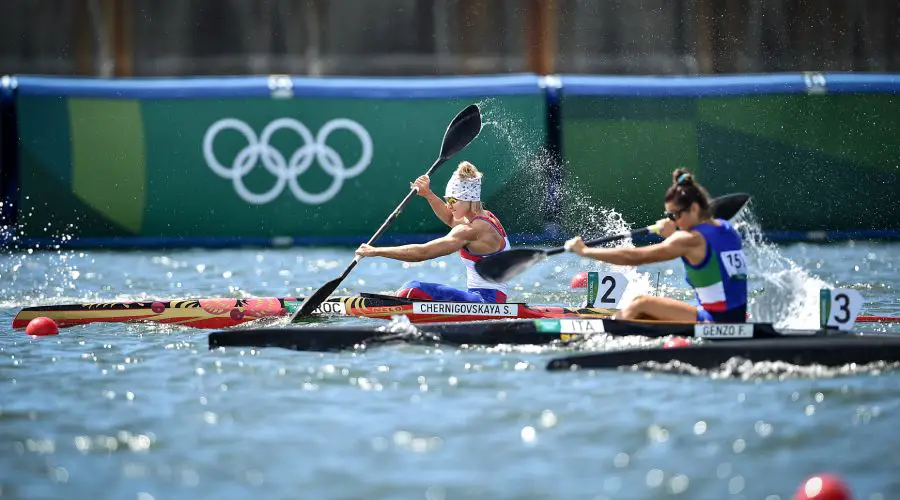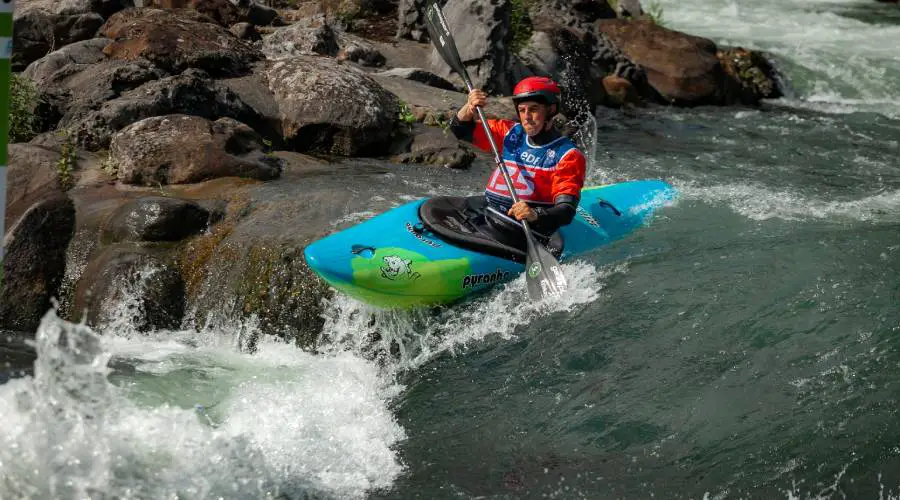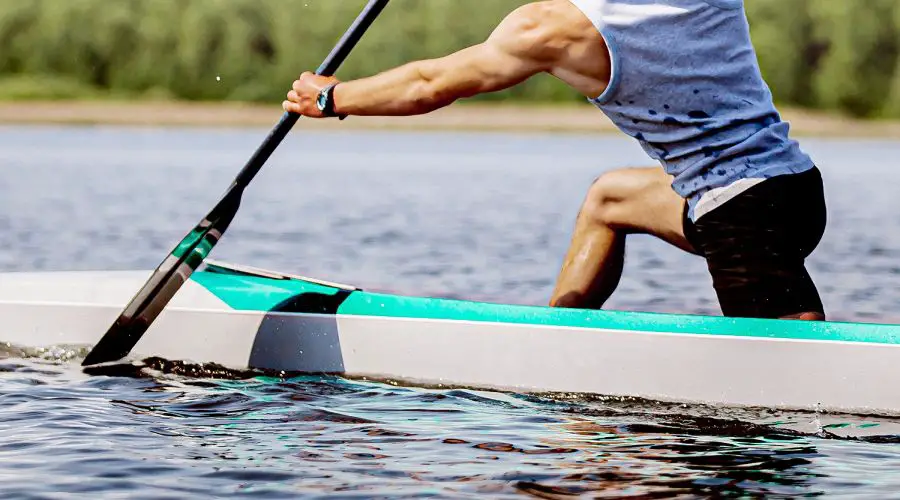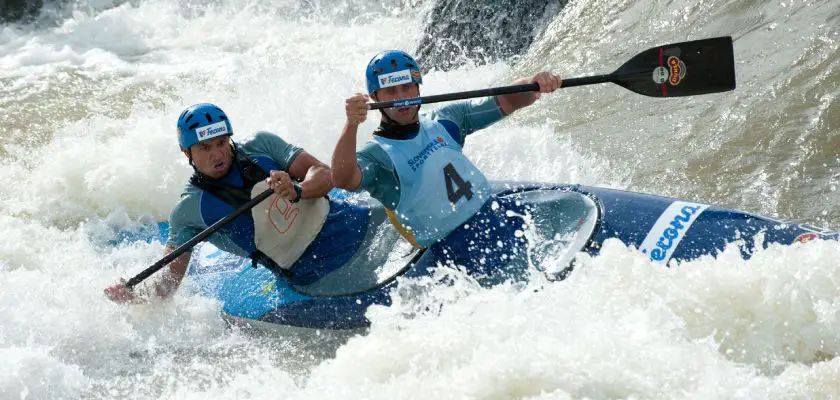Canoeing is an Olympic sport that consists of gliding across the water using a boat powered by oars.
Within this sport, there are different disciplines, which vary according to the type of boat, the route, the number of competitors and the objective.
Are you curious about this world? Then you’ve come to the right place. We’ve produced a complete guide that will clear up all your doubts!
In the text below, you’ll learn all about canoeing, such as its history, rules, how regattas work and the equipment used.
Check it out 👇
Canoeing history
The history of canoeing goes back thousands of years and has deep roots in various cultures around the world. From its origins as a mere means of transport for human beings to its consolidation as a high-level competitive sport, the practice has undergone several transformations.
In the early days of human civilisation, prehistoric peoples used hollowed-out tree trunks as rudimentary boats to navigate rivers and lakes, allowing for fishing and the transport of people and goods.
As ancient societies progressed, however, canoeing took on different forms and purposes around the world.
In the 19th century, the practice began to take on a sporting flavour. Interest in leisure and outdoor recreation grew among the European and North American middle classes during this period, leading to the development of clubs and associations dedicated to canoeing.
Regattas and formal competitions were organised – and the first modern rules and techniques began to spread around the world.
The sport became an Olympic sport for the first time at the Paris Games in 1924, with calm water canoeing competitions.
Eventually, whitewater canoeing competitions were also added to the Olympic programme, reflecting the diversity of disciplines within the sport.
Throughout the 20th and 21st centuries, canoeing continued to develop as a global competitive sport, with international federations established to govern and promote the sport worldwide.
Modern technology has brought innovations in equipment manufacture and athlete training, raising the level of performance and competitiveness.
Today, canoeing is practised in a variety of forms, including speed, slalom, whitewater, ocean and marathon races.
Canoeing disciplines

- Speed Canoeing | In speed canoeing, competitors paddle in a straight line on a calm water course. The races are contested over different distances and types of boat, such as individual kayaks, group kayaks or canoes. This sport is contested in the Olympic Games;
- Slalom | In slalom canoeing, competitors travel down a winding course full of obstacles in a river. They have to navigate strategically placed gates while facing rapids and rocks. This discipline is also contested in the Olympic Games;
- Marathon | This is a form of long-distance canoeing on open water, usually on rivers, lakes or seas. Marathon races can vary in distance, but generally cover long distances and can last several hours;
- Ocean | Similar to marathon canoeing, but carried out exclusively on the ocean or in coastal waters. Competitors face variable conditions, including waves, currents and winds;
- Freestyle | In this discipline, competitors perform acrobatic and artistic manoeuvres in turbulent waters, such as rapids and waves. They are judged on the difficulty and execution of the manoeuvres.
Olympic Canoeing Races (Speed)
- C-1 | men’s 1,000 metres (canoe, individual);
- C-2 | 500 metres for men (canoe, doubles);
- K-1 | men’s 1,000 metres (kayak, individual);
- K-2 | 500 metres for men (kayak, doubles);
- K-4 | 500 metres for men (kayak, foursomes);
- C-1 | 200 metres for women (canoe, individual);
- C-2 | 500 metres for women (canoe, doubles);
- K-1 | 500 metres for women (kayak, individual);
- K-2 | 500 metres for women (kayak, doubles);
- K-4 | 500 metres for women (kayak, foursomes).
Olympic Canoeing Races (Slalom)
C-1 | Male (canoe, individual);
K-1 | Male (kayak, individual);
KX-1 | Male (kayak, individual);
C-1 | Female (canoe, individual);
K-1 | Female (kayak, individual);
KX-1 | Female (kayak, individual).
Canoeing rules (slalom)

In the slalom, competitors travel down the river in their canoes or kayaks, facing currents and natural obstacles such as rocks and rapids.
They must pass through a series of numbered gates, which are arranged to test their manoeuvring skills, agility and precision.
There are two types of gates: green gates, which must be crossed by travelling down the river, and red gates, which require the athletes to cross them by rowing against the current.
Touching a gate or failing to pass through it correctly results in time penalties added to the final result.
Competitors are judged on the total time of their descent down the course, including penalties. The one who completes the course in the shortest time, with the fewest penalties, is declared the winner.
Slalom races require not only physical skill, but also mental concentration, quick decision-making and control of the boat.
Canoeing rules (speed)
In speed races, athletes paddle in canoes or kayaks on a straight, calm course, usually on rivers, lakes or canals. The distances vary, with 200, 500 or 1,000 metres being common, either individually or in teams.
During the regatta, the athletes position themselves in their boats, ready to start the race. When the start is given, they row as hard as they can to cover the distance as quickly as possible.
As in athletics and swimming, the aim is simple: to be the first to cross the finish line, within the rules of the competition.
To do this, athletes need to maintain balance and stability in their boats, while applying force to the oars to propel the boat. Strategy also plays an important role.
Winning a speed canoe race requires not only physical strength, but also mental concentration, coordination and emotional control.
Canoeing equipment

- Canoe or kayak | The choice between a canoe or kayak depends on the type of competition. Canoes have an open design, while kayaks are closed. They are made of light and resistant materials such as fibreglass, plastic or kevlar;
- Paddle | Paddles are used to propel the boat through the water. They are made from materials such as carbon fibre, aluminium or wood and have a specific design for each sport;
- Helmet | The helmet is essential to protect athletes’ heads from impacts during navigation, especially in slalom races where there is a risk of collision with rocks and obstacles;
- Life jacket | The life jacket is compulsory in many canoeing competitions, guaranteeing buoyancy and the safety of athletes in the event of a capsize or fall into the water;
- Special clothing | In races held in cold waters, athletes wear neoprene clothing to keep their bodies warm;
- Shoes | Sturdy, grippy shoes are used to protect the feet and provide good traction in the boat;
- Gloves | Some rowers choose to wear gloves to protect their hands and provide a better grip on the oars;
- Sunglasses | On sunny days, sunglasses with UV protection are important to protect athletes’ eyes from intense light and reflections in the water.
That’s it! Now you know all about canoeing. Did you like this content? Let us know what you think in the comments! For more articles on games, betting and Olympic sports, just visit our website every day 👊



